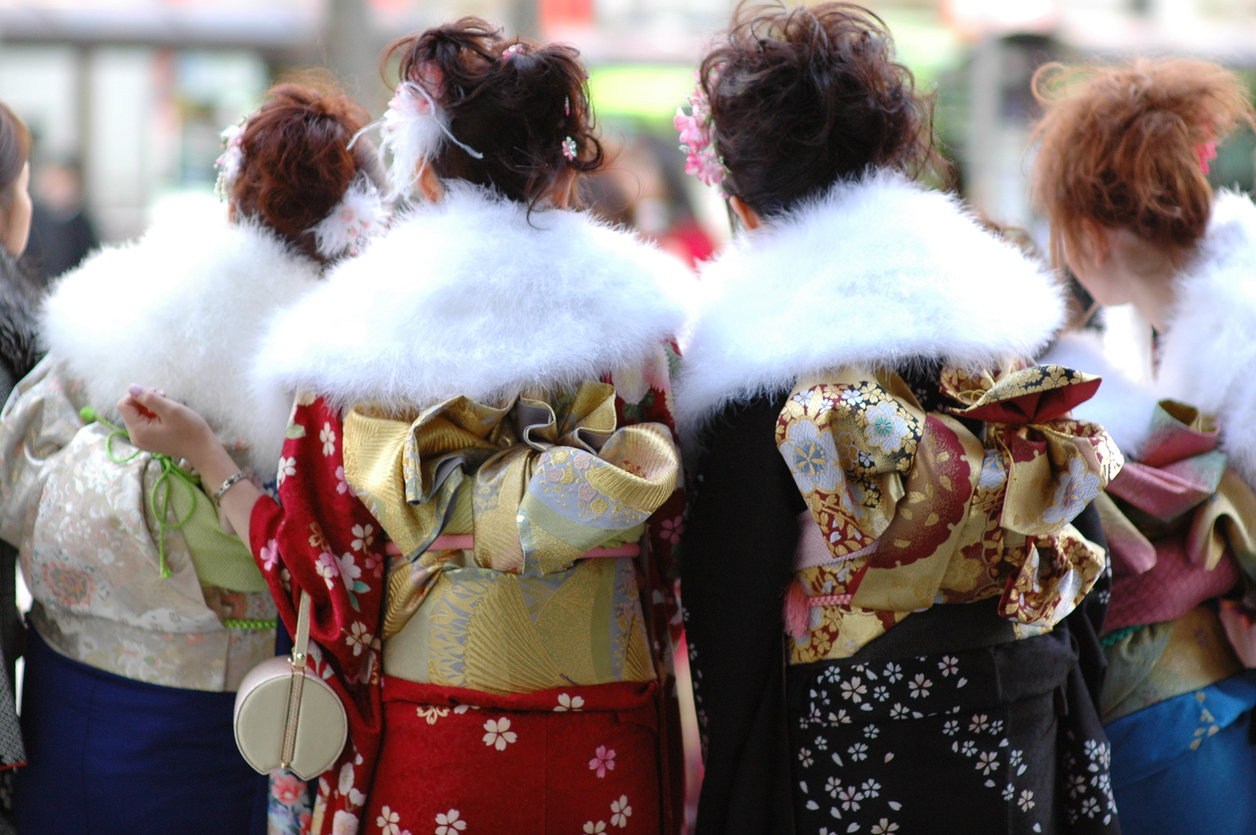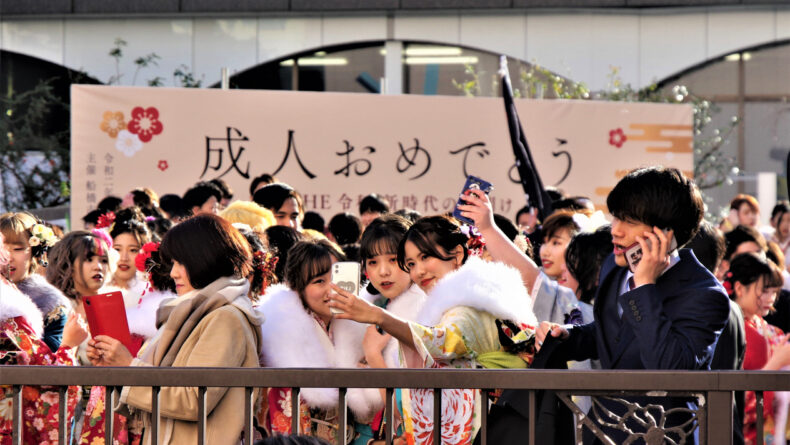7 Things You Probably Didn’t Know About Kimono
Get To Know The Iconic Garment Before You Wear Or Buy
Before you even think of wearing the iconic kimono, here are a few things you should know about it.
Do you remember when U.S. influencer and entrepreneur Kim Kardashian trademarked the word “kimono” for her line of shapewear and then swiftly backtracked when social media criticized her lack of cultural sensitivity? Nobody doubted why it was such a big deal. After all, she tried to trademark a word that represented a national treasure in Japan. In fact, what Kardashian did smack heavily of cultural appropriation—adopting something from a foreign culture and using it in an entirely different and wholly inappropriate context.
The History
 © Photo by iStock: ziggy_mars
© Photo by iStock: ziggy_marsJust like the article of clothing, the word itself is quite straightforward. A combination of the characters for “to wear” (着る) and “thing” (物). The minimalist garment has been synonymous with Japanese culture since it was first worn by aristocrats during the Heian period (794-1185). At the time, they wore several layers of clothing, including the kosode (小袖), a layer that was worn closest to the body. Over time, this underlayer evolved into the modern-day kimono.
The way Japanese people wear the kimono has changed significantly over the years. It became hugely popular during the Edo period (1603-1868), especially among the trendsetting geishas and kabuki actors. Then, in 1683, Tokugawa, the fifth shogun, banned people from wearing expensive and showy kimono. However, this didn’t stop people from wearing the garment. Instead, they rebelled by donning pieces with designs that were only apparent if someone looked at the fabric very closely.
Kimonos then experienced a major comeback in the middle of the 19th century. However, again, they fell out of favor during the Meiji era (1868-1912). During this time, the government wanted everyone to wear Western clothes in keeping with the country’s massive Westernization. Today, the kimono remains a mainstay in Japanese fashion.
With that said, here are seven things you probably didn’t know about kimono.
1. They’re Made From A Single Bolt Of Cloth
 © Photo by iStock: Jonathan Austin Daniels
© Photo by iStock: Jonathan Austin DanielsEach kimono is made up of eight rectangular strips cut from a single bolt of cloth, also called a tanmono (反物). The bolt is standard size, measuring 38 centimeters by 12.5 meters. When a kimono is made, any excess length is hemmed rather than cut off. Wearing a kimono usually involves three essential pieces. Under the kimono, you usually wear a light underlayer called nagajuban (長襦袢). The kimono and the underlayer are then held in place with a wide belt called an obi (帯).
2. Kimono Differ According To The Wearer
 © Photo by iStock: photoclicks
© Photo by iStock: photoclicksThere are different kimono to match the age and gender of the person wearing them. For instance, men wear a kimono with a jacket and wide-legged pants called hakama (袴). Male designs also tend to be in more subdued colors and patterns. Women wear different kimono depending on what stage of life they’re in.
For example, for formal events like the Seijin No Hi (Coming of Age) ceremony, young, single women often wear furisode (振袖)—a kimono with long, flowy sleeves and vibrant designs. On the other hand, for formal occasions, married women often wear tomosode (留袖)—a kimono with short sleeves, more subtle designs, and the family crest. All women, whatever their age, may also dress in a houmongi (訪問着; “visiting kimono”) when paying social visits or attending parties.
3. There Are Kimono To Suit Every Pocket
 © Photo by iStock: Satoshi-K
© Photo by iStock: Satoshi-KKimonos come in a variety of fabrics—ultra-plush silk, humble hemp, versatile cotton and machine-washable polyester blends. Silk kimonos are usually reserved for ultra-formal occasions such as tea ceremonies, weddings and funerals.
On the other hand, men and women wear breezier yukata (浴衣) or cotton kimono during the warmer months, especially for 祭り (matsuri; “summer festivals”). Because of lower production costs, cotton yukata tend to be more affordable than silk kimono, making them a perfect souvenir for visitors. However, if you’re hell-bent on getting a silk kimono, you can pick up secondhand ones in recycle shops and flea markets in almost any major Japanese city, particularly in Kyoto.
4. They Make The Perfect Family Heirloom
 © Photo by iStock: kohei_hara
© Photo by iStock: kohei_haraIf they are cared for properly, kimono can last a very long time, even across three generations. Kimono are often decorated with 家紋 (kamon; family crest), making them the perfect gift to pass from mother to daughter or father to son. Even the oldest kimono can be revived by specialists to keep a piece of family history alive.
These specialists will unstitch, wash, stretch, restitch and restore the colors of the garment so that it looks brand new again. However, if you think a kimono is definitely on its last legs, you can still upcycle it in many ways. For instance, an obi can make a terrific table runner or be framed as a piece of art. Material can also be cut from torn or stained kimono to make dresses, handbags and other accessories.
5. They Are Wearable Pieces Of Art
 © Photo by iStock: SantosJPN
© Photo by iStock: SantosJPNBelieve it or not, kimonos are pieces of art that change with the seasons. For the colder months, kimonos are often lined and made of heavier fabrics such as silk. They may display motifs such as the plum and cherry blossoms of late winter and spring or the maple leaves of fall. On the other hand, for the warmer months, kimonos of lighter fabrics like silk-gauze, linen and cotton are worn. These kimonos may feature summery bamboo leaves, dragonflies and seasonal flowers like morning glories and irises.
6. Kimono Accessories Can Change The Look Significantly
 © Photo by iStock: recep-bg
© Photo by iStock: recep-bgTraditionally, kimono are worn with several accessories that complement their elegance. Footwear like 草履 (zori; “formal sandals”) or 下駄 (geta; “wooden clogs”) not only affects your comfort but also your formality. Zori are worn with more formal kimono and indicate a refined, polished look, while geta, often paired with yukata, give off a more relaxed, festive vibe.
The obi is where things get even more meaningful. The knot, or musubi (結び), tied at the back can reflect your status—married women tend to wear simple knots, while younger, unmarried women wear more intricate ones. The obi accessories like the 帯締め (obijime; “cord”) and 帯留め (obidome; “clasp”) can enhance the obi’s look, with certain colors or designs representing specific meanings, such as prosperity or good luck. A trailing obi seen on 舞子 (maiko; “apprentice geisha”) indicates their artistic and cultural role. By choosing the right accessories, you can completely change how your kimono represents you!
7. Wearing A Kimono Does Come With Rules
 © Photo by iStock: JGalione
© Photo by iStock: JGalioneFrom tying the obi neatly at the back to ensuring the collar is gracefully aligned, every detail matters when wearing a kimono. You’ll want to pick patterns that suit the season and take small, elegant steps to avoid tripping over the hem once wearing it. Even your tabi socks and zori have a role in completing the look for formal occasions. However, the golden rule, the one you absolutely can’t forget, is the left-over-right wrap.
When closing the kimono around your chest, the left side must overlap the right side. It’s a seemingly small detail, but it carries enormous cultural weight. Wrapping the kimono right over left is strictly reserved for dressing the deceased for burial, symbolizing their journey into the next world. Wearing it this way in everyday life is a major faux pas that can leave people uncomfortable and the wearer embarrassed. So, always remember: left over right!
Make A Statement, Keep The Tradition
No matter who tries to capitalize on this artifact, kimono are and will probably always remain an ingrained part of Japanese culture. However, that doesn’t mean that kimono have never transcended Japan. They have conquered international runways across the globe because they are so darn versatile—they can be as minimalist and understated as you’d like or as bold and lavish as you dare. So be bold and experiment with this iconic garment, but never ever forget where it originally came from.
If you want to try it before you buy, check out our article on kimono rental in Tokyo.
What are some things about kimono you know about? Let us know in the comments.
















Leave a Reply